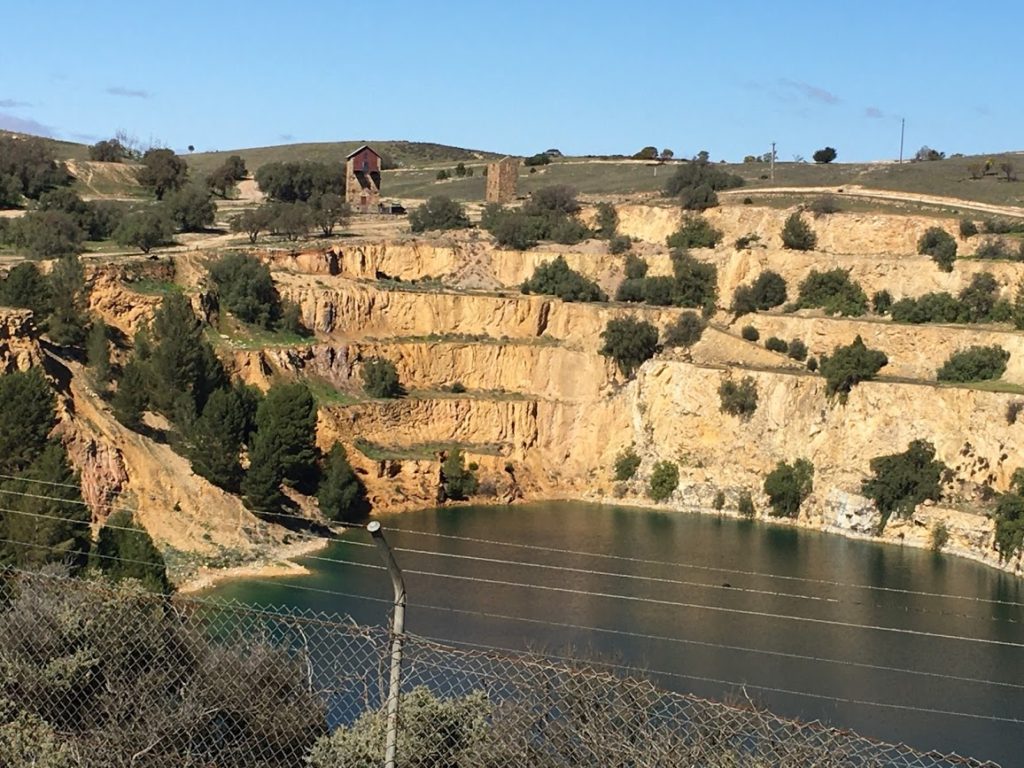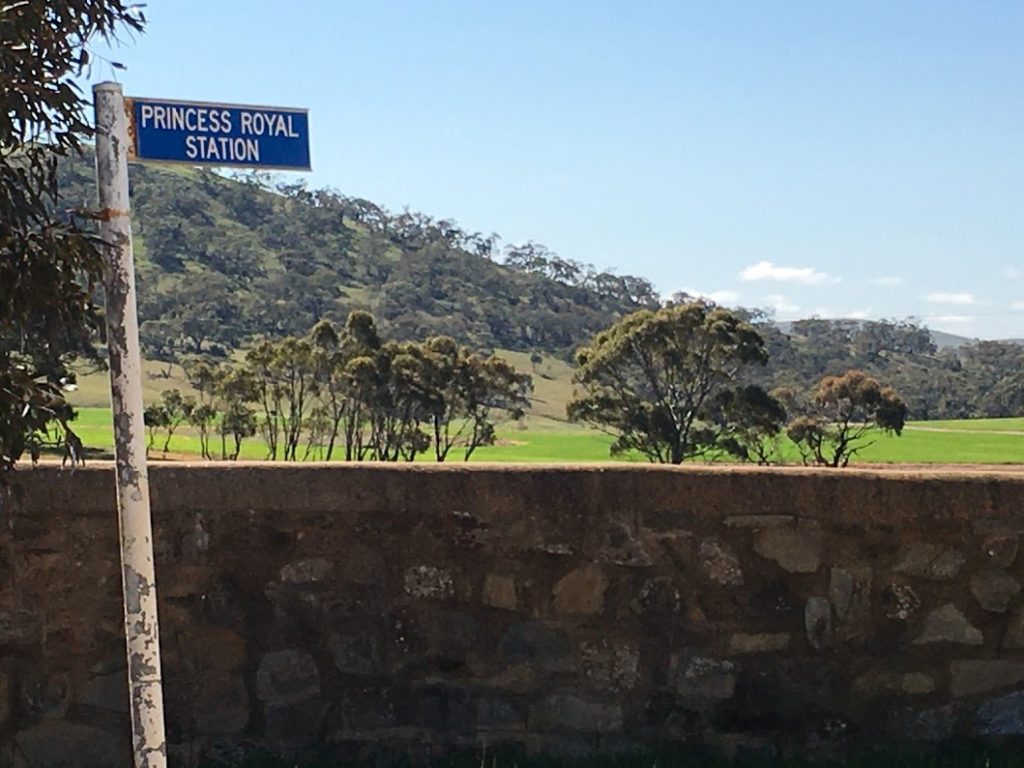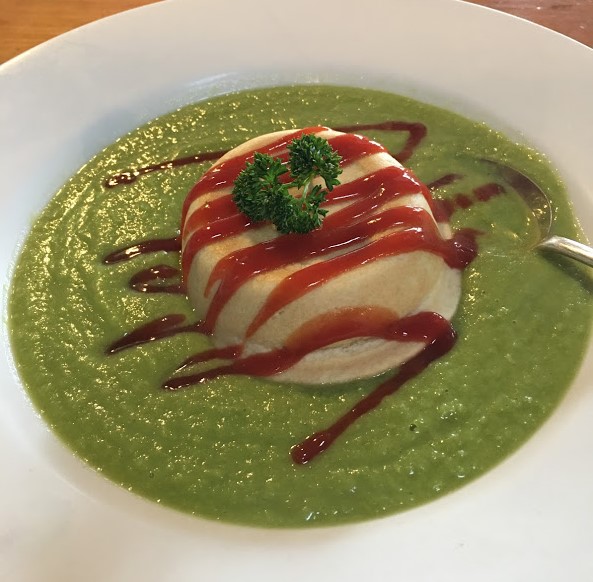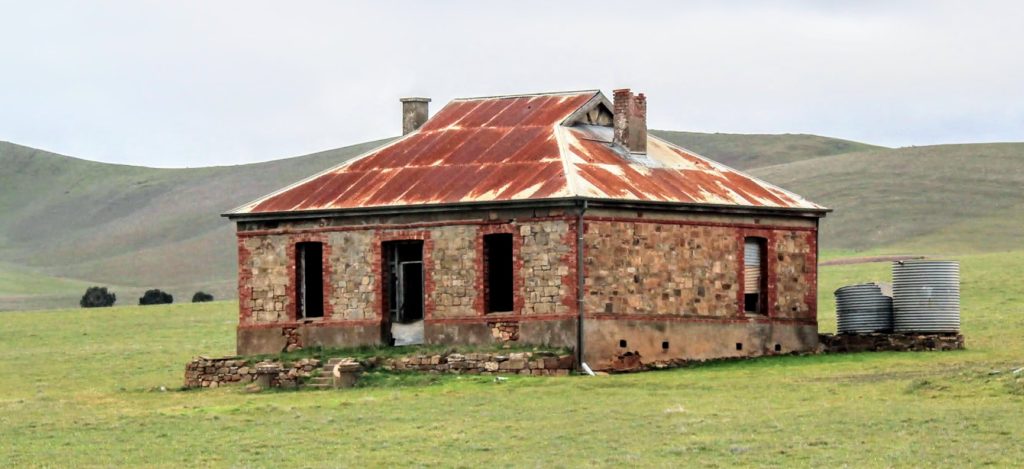
This time last year I was in London, in a city full of covid free people and lush green parks, strolling through Borough Market on a bright summer’s day. Today I am in Burra, South Australia. I am surrounded by lush green paddocks, and thank goodness it’s still a covid free town. Unfortunately, it is mid winter, damp and chilly, and the rain has been shrouding the bare hills in a mizzling mist for the past twenty-four hours. Last night, we huddled around a roaring fire in a tiny, nineteenth century cottage with slate floors and short doors. And as soon as I have dropped the men off at World’s End to walk the Heysen Trail, I am heading back to that fire, my Ugg boots and a large mug of tea.
These days, Burra is a quiet country town with a population of nine hundred, tucked among the Bald Hills to the east of the Clare Valley. Once upon a time, when the South Australian capital of Adelaide had a population of only seven thousand, this sleepy backwater was a thriving metropolis of five thousand inhabitants.
As the crow flies, Burra lies 143 km north of Adelaide, and on the new northern expressway, it is an effortless, two-hour drive. In 1845, it was a long, hot journey on foot, or plodding along in a bullock dray. A handful of enterprising pastoralists had already found their way here and planted a few sheep, but the Burra may never have been more than a remote farming region, if it hadn’t been for a couple of local shepherds who, one auspicious afternoon, found some copper in the surrounding hills.
Thus, barely a decade after South Australia was established as a new, convict free colony, ‘coppermania’ kicked in and – for a brief moment – Burra gained fame and fortune and became the largest inland settlement in Australia. the proceeds of the renowned ‘Monster Mine’ supporting the new colony through years of near bankruptcy.

Miners thronged to the area from Germany, Cornwall, Scotland and Wales. In the beginning, the copper ore was shipped to Wales for smelting, but by 1849, Welsh smelters had arrived to do the job locally and were burning 600 of firewood a week to run the furnaces and extract the base metal from the ore.
Although it’s stardom lasted barely three decades, Burra is still teeming with signs of its brief but successful mining venture. Armed with a map and a key, you can discover the last remaining dugout homes the early miners created in the riverbank, and the tiny, row cottages that were eventually built when disease and floods drove the miners and their families from their hobbit holes, the prison where many found temporary housing and the tunnels below the old brewery. Tall chimneys rise above the town, created as an outlet for the boilers in the engine houses along the rim of the open cut mine. One can be seen clearly on Market Road, topped with a cut out of Johnny Green, the miners mascot.

There is a mining museum at the Bon Accord mine site, a second mine that never quite got off the ground. A third mine also failed to live up to the expectations of its owners at Princess Royal Station, nine miles south of Burra. In the meantime, however, the mine belonging to the South Australian Mining Corporation was thriving. Half a dozen villages sprang up around the mines, including the company town of Kooringa. The railway arrived from Adelaide in 1870, and at the height of its success, there were nine watering holes in the area, all served by the Unicorn Brewery on Bridge Terrace. Today, only three pubs are still operating, and the villages of Kooringa, Redruth, Hampton, Aberdeen and something Welsh without any vowels have been absorbed into one: Burra, claiming its name from the Burra Burra Copper Mine and the Burra Burra Creek that flows through the town.
The origin of this name is lost in legend. Was it a derivation of an original ‘Burrow Creek?’ Or the indigenous word for creek bestowed on it by the local Ngadjuri people? Or perhaps it came from the Hindustani word for ‘big’ or ‘great’ used by the Indians shepherds of an early pastoralist? Whatever the etymology, it’s a pretty, atmospheric little town. When the miners began to leave the town in the 1870s, the mining association demolished many houses, so that today the town seems widely scattered and the streetscape can look like a gap-toothed six-year-old in places. But there are still plenty of homes built of local stone and surrounded by sprawling gardens, that have survived to beautify the town.
But enough of the history class. As you can see, it stopped raining long enough for me to get out and explore the town. I even had some company, when a girlfriend arrived with her husband, who was eager to join my boys on their expedition into the outback. So, while they trudged over the hills and far away, we followed the heritage tour and visited an art gallery in the old Telegraph Station, with a fascinating exhibit about Barbara Hanrahan, an Adelaide author and artist I had studied at university long ago, who had once dated a local and left him a collection of her prints.

We met lots of friendly locals on our travels: at the art gallery, the information centre, the museums and the coffee shops. Everyone seemed happy to welcome us and found time for a chat, a history lesson or a tall tale of ghosts and gremlins. When hunger struck, we wandered into ‘Good Golly Miss Polly,’ a quaint and quirky tearoom with a colourful collection of old saucers mounted on green walls below a corrugated iron ceiling painted a deep raspberry pink. Stepping back in time, we sat by the potbellied stove and drank copious amounts of exceptionally good coffee – a secret recipe I could not wheedle from the staff – and discovered a top-notch pie floater on the menu. For the uninitiated, this is a South Australian icon: fresh pea soup with a steak pie island in the centre, garnished in tomato sauce and parsley, which proved to be the perfect lunch for a cold winter’s day. Unless, of course, you felt more like a ‘tiddy oggy’ – a novel Cornish pasty with savoury meat and vegetables at one end, and stewed apple at the other – or a tureen of delicious pumpkin soup, flavoured with coconut milk and a dash of fresh ginger. For afternoon tea, or dessert, there were sumptuous scones and cream, or wondrous homemade cakes. I don’t often succumb to cake, but the kumquat and citrus cake with a thin layer of cream cheese icing was quite divine: moist, light and lemony.

On my last day in town, the sun finally broke through the clouds and the sky was a bright, clear blue. I did a final lap of the town centre before strolling back across the creek to our cosy little cottage, where low doorways had caused a few bumps and bruises, but there were no disruptive ghosts, and we were warm and toasty beneath the pink patchwork quilts. Hard to imagine that this world of green pastures and muddy red roads will become a dry, turmeric-coloured dust bowl in summer…
